Venezuela is a true South American beauty, a country with incredible natural wonders and sites of historical interest. The world’s tallest waterfall, Angel Falls, is one of the most famous Venezuela landmarks and can be found in one of the country’s many national parks. When exploring the country’s natural beauty, keep an eye out for the local wildlife. Venezuela is home to more than 1000 species of birds and fish, including the rare Amazon River dolphin and Orinoco crocodiles. Keen bird watchers should head to Henri Pittier National Park, while those searching for a wide variety of marine life should head to Los Roques Archipelago National Park.
Aside from breath-taking national parks, Venezuela also has a beautiful coastline, with white sand beaches bordered by palm trees and turquoise waters. So naturally, people flock to the beaches in Venezuela to soak up the sunshine.
Venezuela is also a very cheap country to visit, and in many bars and restaurants, American dollars are accepted. Venezuela experiences warm weather year-round, making it pleasant both in nature and in the towns and cities. While in Venezuela, make the most of the local cuisine. The food combines French, Spanish, West African, Italian and Portuguese, giving it a unique blend of dishes. Many meals will include rice, plantains, and yams, which are staples in the country.
Venezuela’s towns and cities are incredibly charming, with Spanish and Portuguese architectural influences. Whether visiting the country for its nature or its history, Venezuela certainly has something for everyone. Here are 20 natural and historical Venezuela landmarks to get you started.
Venezuela Landmarks
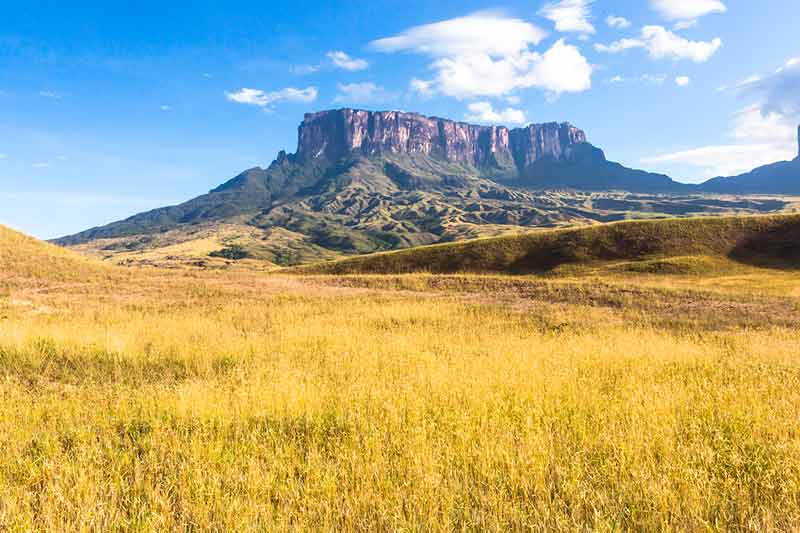
Natural Landmarks In Venezuela
1- Angel Falls
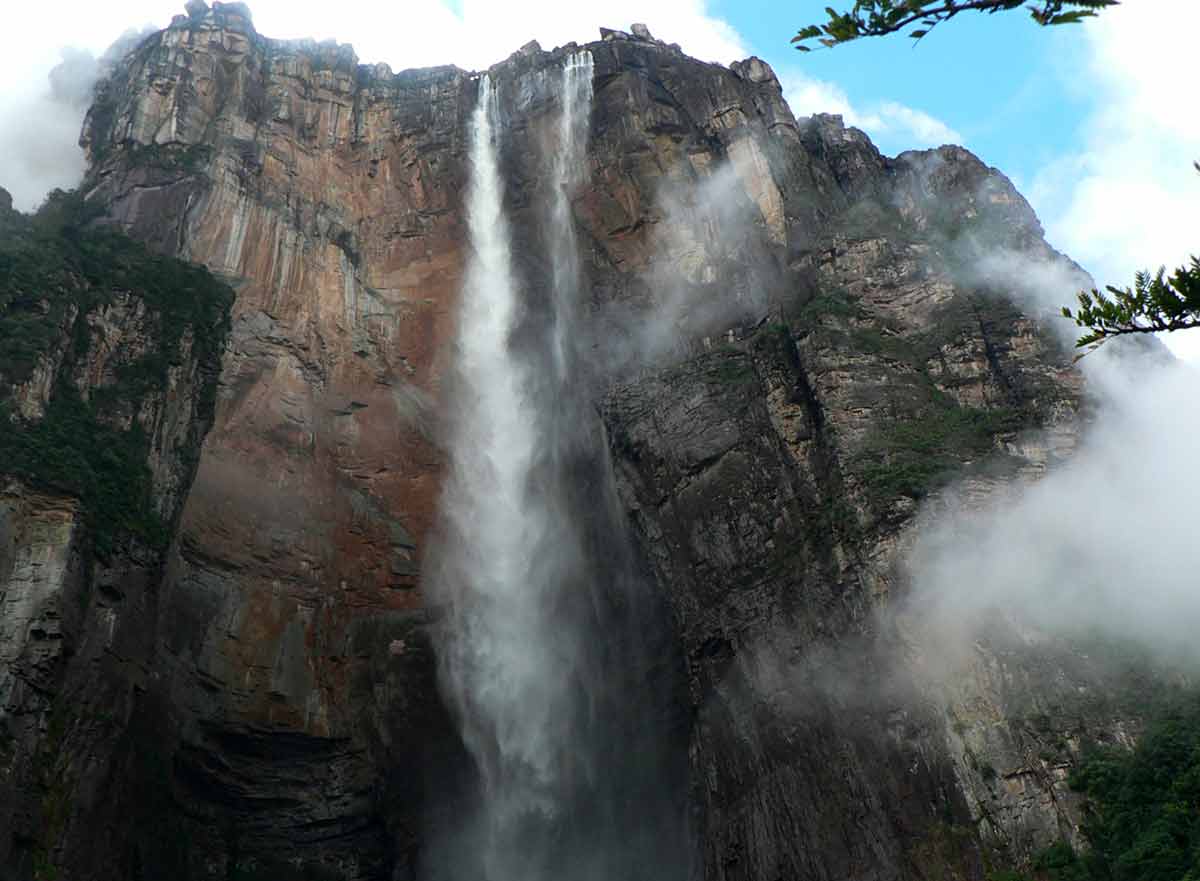
Jimmy Angel, an American pilot, landed an aeroplane on Auyantepui in 1937 while searching for gold.
Instead, he came across the tallest falls in the world, which now bears his name.
Known locally as El Salto Angel, the waterfall is 979m (3212ft) high, making it 10 times the height of Niagara Falls.
The waterfall towers over the surrounding Canaima National Park.
Angel Falls was the inspiration behind Paradise Falls from the Pixar movie Up, attracting many fans of the film to see this spectacular landscape with their own eyes.
Within the national park, visitors can go hiking, kayaking and mountain climbing.
Angel Falls is at Canaima National Park, 8001 Venezuela.
2- Los Roques Archipelago
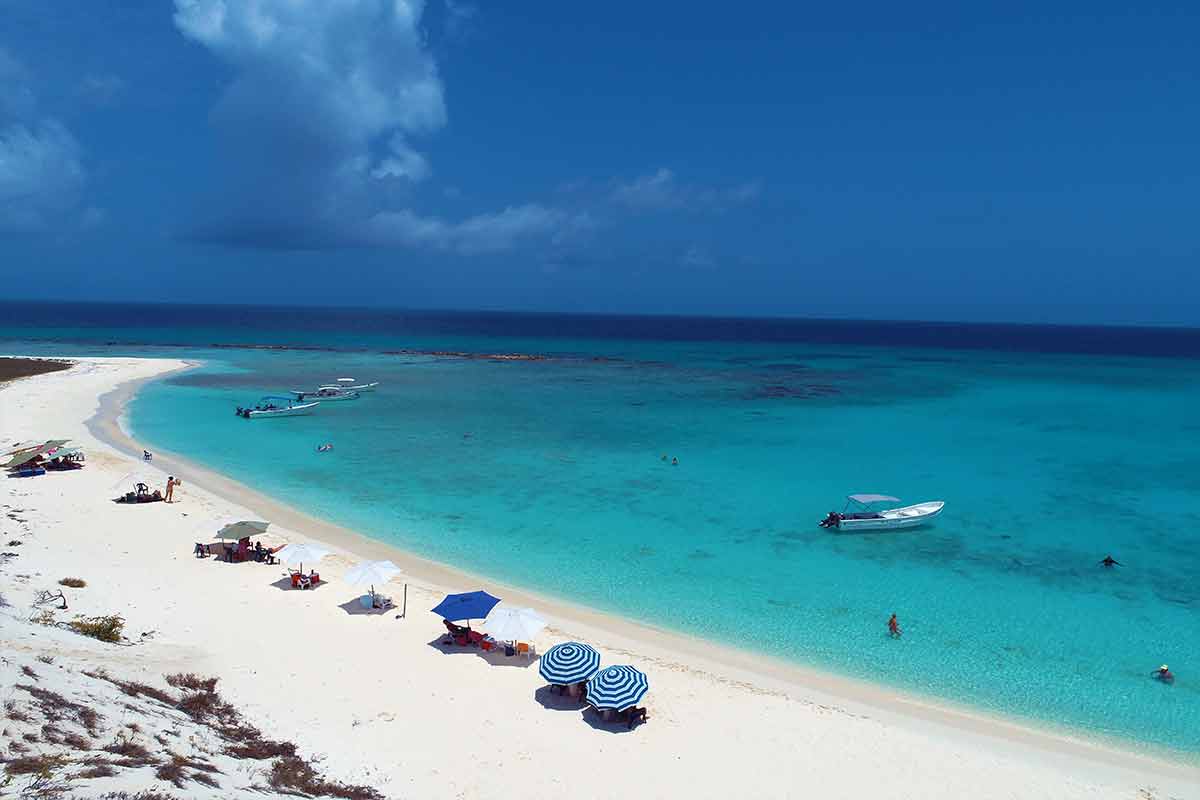
In 1972, Los Roques Archipelago was created to protect the delicate marine ecosystem and beauty of its waters.
The waters are filled with coral reefs, mangroves and beds of seagrass.
Thanks to its calm waters and beautiful surroundings, Los Roques Archipelago is not only the largest marine park in the Caribbean Sea but one of the most visited and desirable.
Protected by the archipelago are 61 species of Cora and 280 species of fish, while four endangered species of sea turtles nest on the islands.
Scuba diving is popular within the archipelago, thanks to its marine biodiversity.
Los Roques Archipelago is at Federal Dependencies of Venezuela.
3- Orinoco Delta
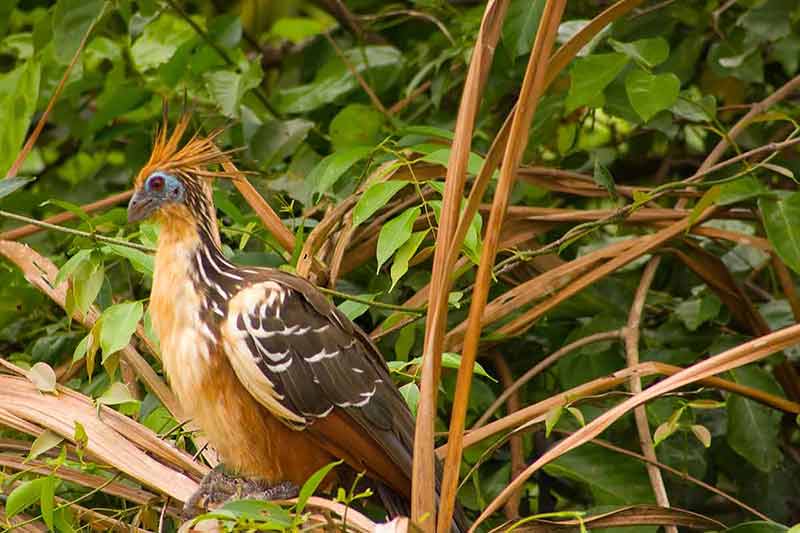
The Orinoco River forms the Orinoco Delta as it fans out into several distributaries as the river stretches out to sea.
The delta is enormous, stretching for 43,646 square kilometres (16,852 square miles) and has an incredible wealth of natural wonder.
From its incredibly biodiverse flora and fauna, the delta is also home to various animals, birds and insects, including the rare Orinoco crocodile.
Freshwater dolphins, howler monkeys and macaws are also found in the area.
Orinoco Delta is at 6410 Delta Amacuro.
4- Roraima
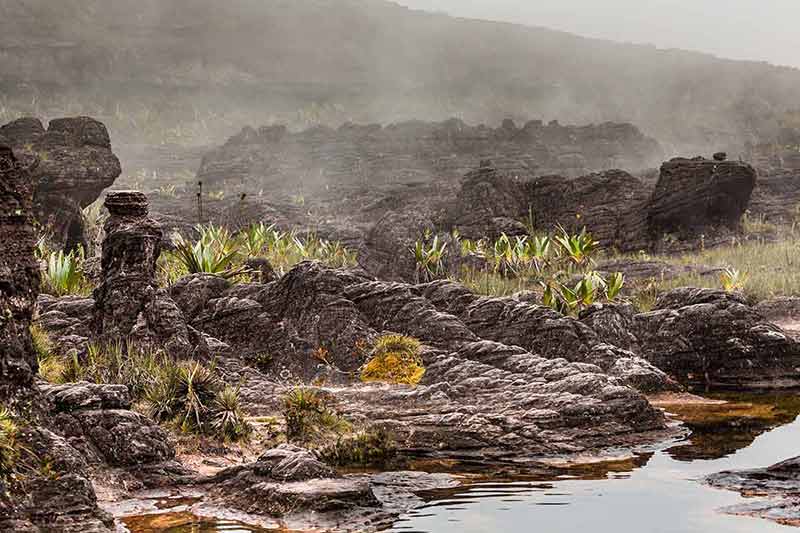
Roraima sits where Venezuela, Brazil and Guyana meet, with most of the mountain in Venezuelan territory.
This unique flat-topped mountain is surrounded by sheer cliffs ranging from 400m (1312ft) to 1000m (3280ft) high.
Sir Walter Raleigh discovered the mountain in 1596 during an expedition searching for El Dorado.
Unfortunately, Raleigh could not climb the mountain, leaving its first ascension to Sir Everard Thurn in 1884.
The mountain is 14 km (9 miles) in length and is 2810 m (9222 ft) high at its highest point, named Maverick Rock.
Thanks to its high and isolated location, Roraima sustains several rare flora and fauna species.
The mountain is considered sacred for the Pemons people, the native inhabitants of the surrounding National Park.
Roraima is at 8011 Bolivar.
5- Parque Nacional Los Médanos de Coro
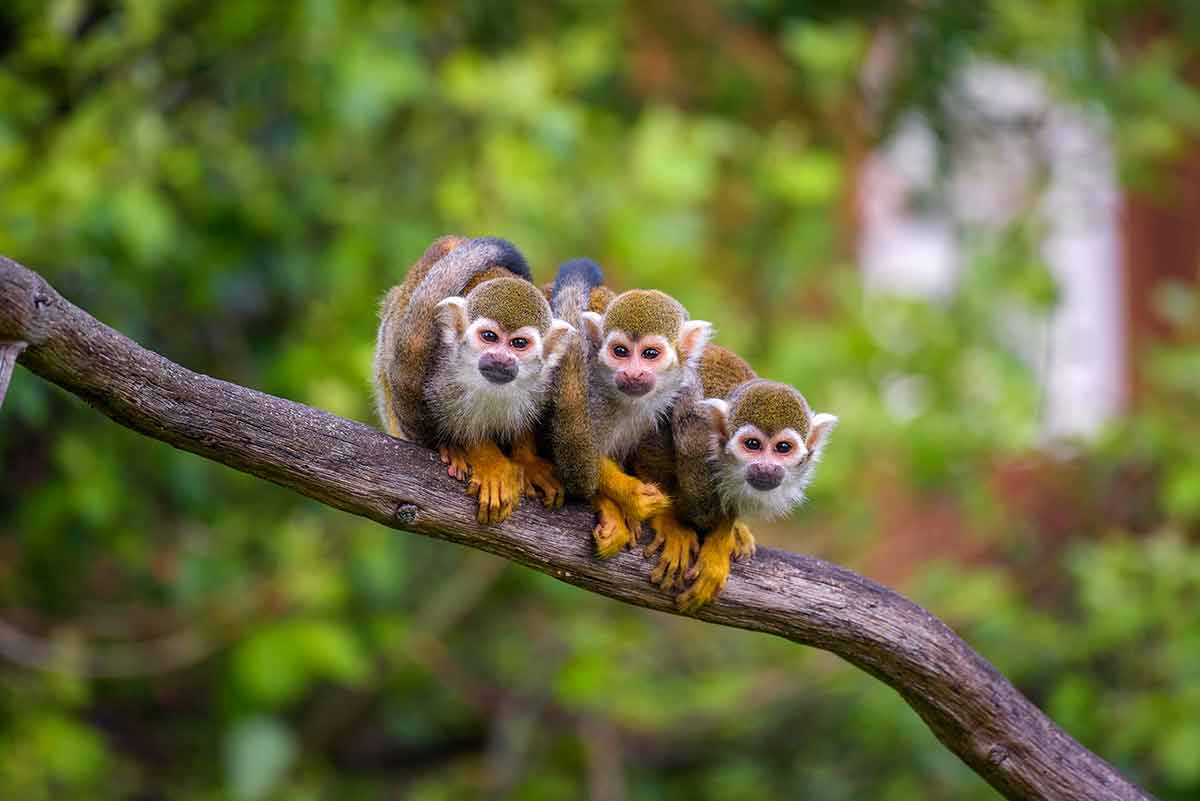
Parque Nacional Los Medanos de Coro in the state of Falcon was created in 1974 as a protected space for the Paraguana xeric scrub ecoregion.
Los Medanos de Coro covers a vast area of 91 sq km (31 sq miles) of varying landscapes.
Within the park are deserts, coastal habitats and salt marshes.
A highlight of the national park is the Medanos sand dunes, which are enormous and cover an area of 5 by 30 km (3.1 by 18.6 miles) and reaches heights of up to 40m (130ft).
The dunes are constantly changing and moving due to the winds.
Nature is limited in the desert region of the park to thorny shrubs and cacti, however in its wetlands and salt marshes, at least 21 species of birds are regularly seen.
The yellow-shouldered amazon bird is frequently spotted here along with lizards, anteaters and desert foxes.
While they are not native to the country, camels can take visitors through the dunes on guided tours.
Parque Nacional Los Medanos de Coro is at Intercomunal Coro – Punto Fijo.
6- Henri Pittier National Park
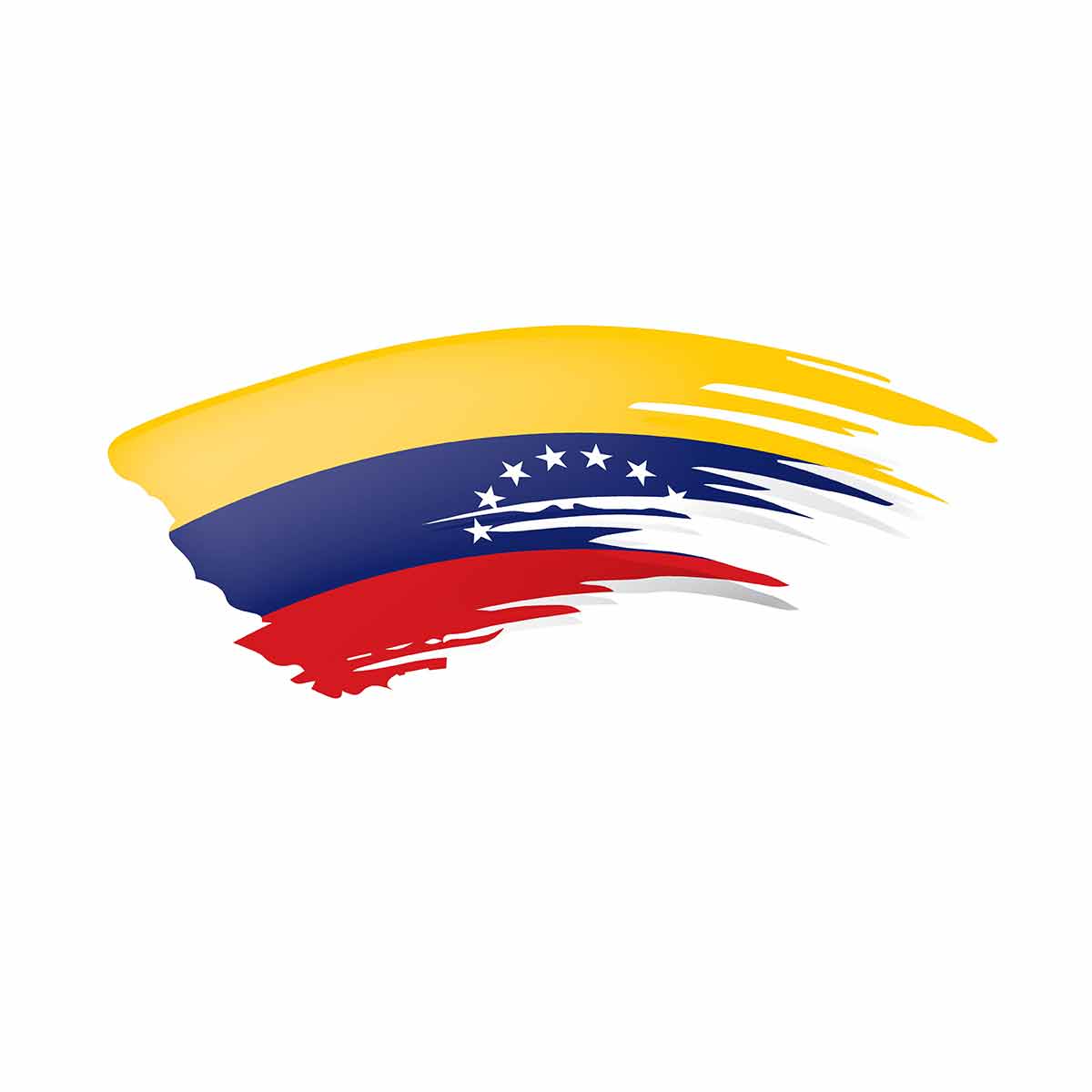
President Eleazar Lopez Contreras decreed the opening of Rancho Grande in 1937, which was later renamed Henri Pittier National Park in 1953.
Henri Pittier was a Swiss geographer, botanist, and ethnologist.
He came to Venezuela in 1917 and classified more than 30,000 plants.
In his honour, the national park named was the first national park to open in the country.
The park covers 107,800 ha of coastland and mountainous regions and is the largest in Venezuela.
Within the national park are nine major rivers, 500 species of birds and a wide variety of flora and fauna.
The area grows some of the best cacao in the world.
Henri Pittier National Park is at Romerito, Aragua, Venezuela.
7- Pico Bolivar
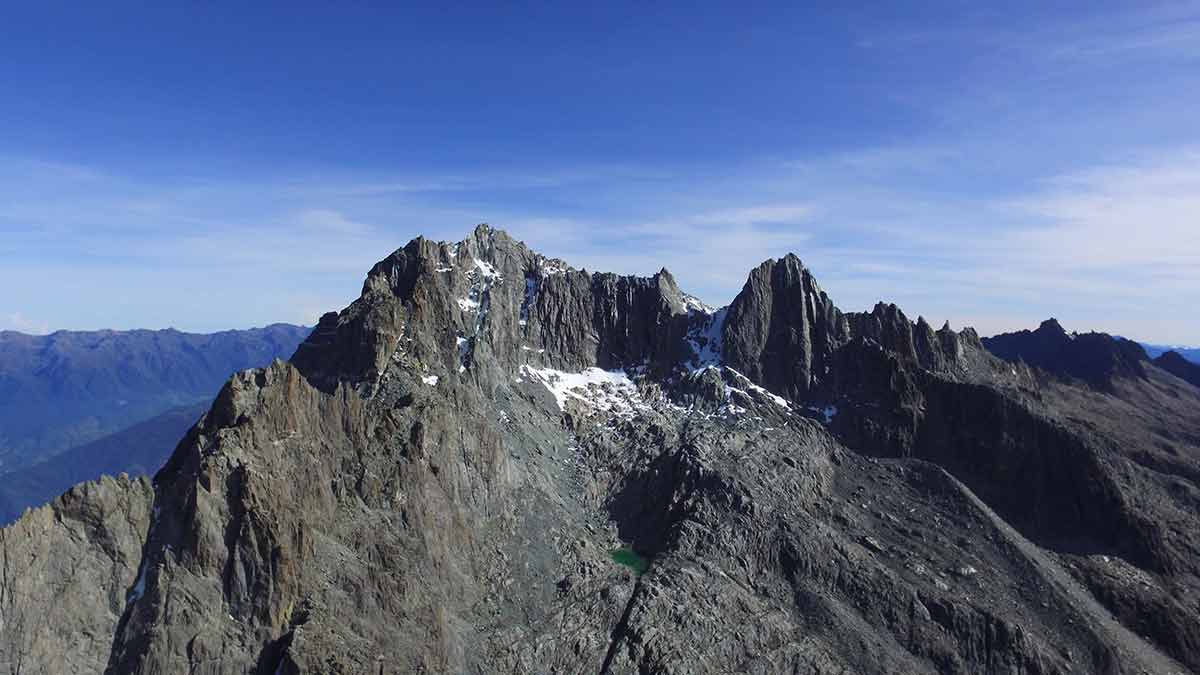
Pico Bolivar is the highest peak in Venezuela at 4978m (16332ft) above sea level and is named after Venezuelan independence hero Simon Bolivar.
Due to its height, the summit is permanently covered with snow and three small glaciers.
The mountain’s summit is accessible only by hiking, as the Merida cable car will only take you as far as Pico Espejo, where you can hike to the summit.
Pico Bolivar is at 5101, Merida, Venezuela.
8- Guácharo Cave
Guacharo Cave in Guacharo National Park became the first national monument of Venezuela in 1949.
Surrounding the cave is a 627 sq km (242 sq miles) of ancient forest, which has protected status for its plant and animal life.
The caves themselves were first fully explored in 1799, when Alexander von Humboldt, a famous explorer, entered the caves for research purposes.
He found a previously unknown species of bird he named guacharos because of their shrill cries.
The birds still populate the cave and the surrounding parkland today.
The birds have a round shape, long slender wings and sharp claws that have evolved to help them cling to the walls of the cave.
Guacharo Cave is at El Guacharo National Park, El Guacharo, Monagas.
9- Catatumbo Lightning
In the sky above Lake Maracaibo, you’ll find a unique natural phenomenon.
It has the most concentrated highest frequency lightning bolts recorded anywhere globally.
This unique attraction happens at night and is worth staying up for as the bolts illuminate the sky in a spectacular display.
Lightning storms are frequent and occur between 140 and 160 times a year, with the lightning hitting as frequently as 40 times a minute.
Catatumbo Lightning is at 5101 Zulia.
10- Lake Maracaibo
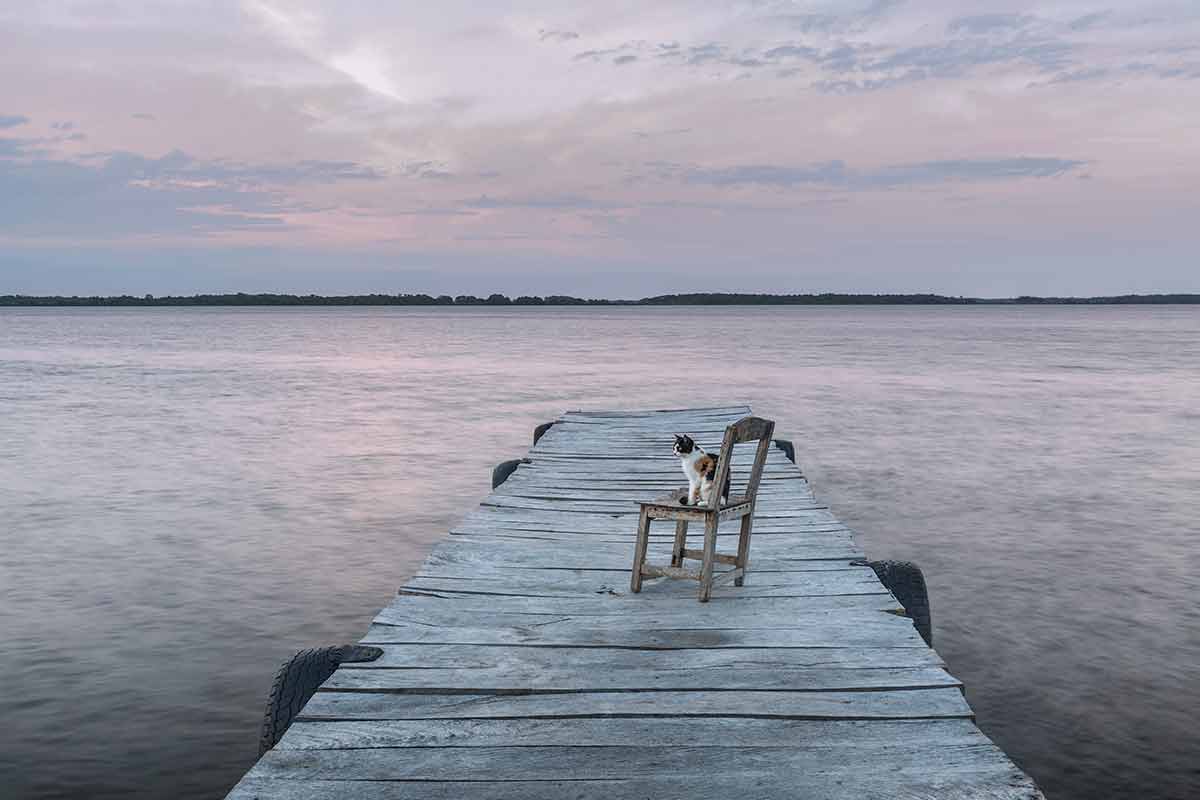
Lake Maracaibo is one of the largest natural lakes in South America, covering 13,210 sq km (5100 sq miles), but despite its size, the lake is relatively shallow, with a maximum depth of 60m (196 ft).
The lake is filled with brackish water and is an inlet of the Caribbean Sea.
According to geological studies, Lake Maracaibo is one of the oldest lakes on Earth, formed between 20 and 35 million years ago.
A cruise on the lake is a great way to see wildlife, such as river dolphins and howler monkeys.
The cruises are run by local groups, with some offering overnight accommodation in the forests and you can combine a visit to the Catatumbo Lightning phenomena on these overnight tours.
Lake Maracaibo is at Zuila.
Also read:
- 20 USA Landmarks
- 23 Canada Landmarks
- 22 Ohio Landmarks
- 21 Arizona Landmarks
- 21 Minnesota Landmarks
- 21 Oregon Landmarks
- 21 Illinois Landmarks
- 21 Colorado Landmarks
- 21 Georgia Landmarks
- 21 Michigan Landmarks
- 23 Los Angeles Landmarks
- 21 Washington Landmarks
- 21 Maryland Landmarks
- 20 Manitoba Landmarks
- 20 Kansas Landmarks
- 21 New Mexico Landmarks
- 20 Idaho Landmarks
- 20 Montana Landmarks
- 20 Oklahoma Landmarks
- 21 Wisconsin Landmarks
- 20 Tennessee Landmarks
- 21 Iowa Landmarks
- 20 Alaska Landmarks
- 20 Miami Landmarks
- 21 West Virginia Landmarks
- 21 Kentucky Landmarks
- 20 Louisiana Landmarks
- 21 Arkansas Landmarks
- 20 Cincinnati Landmarks
- 20 San Antonio Landmarks
- 25 Indiana Landmarks
- 21 New York Landmarks
- 20 Texas Landmarks
- 21 Boston Landmarks
- 20 Florida Landmarks
- 20 Hawaii Landmarks
- 5 South Dakota Landmarks
- 21 Pennsylvania Landmarks
- 23 New Jersey Landmarks
- 21 Virginia Landmarks
- 21 North Carolina Landmarks
- 21 Utah Landmarks
- 21 Nevada Landmarks
- 20 Massachusetts Landmarks
- 20 Washington DC Landmarks
- 20 Vermont Landmarks
- 20 Nebraska Landmarks
- 20 North Dakota Landmarks
- 21 Missouri Landmarks
- 20 Rhode Island Landmarks
- 21 Maine Landmarks
- 21 Connecticut Landmarks
- 20 San Diego Landmarks
- 20 Landmarks In South Carolina
- 20 Mississippi Landmarks
- 20 Las Vegas Landmarks
- 20 Dallas Landmarks
- 20 Houston Landmarks
- 20 Seattle Landmarks
Historical Landmarks In Venezuela
11- National Pantheon of Venezuela
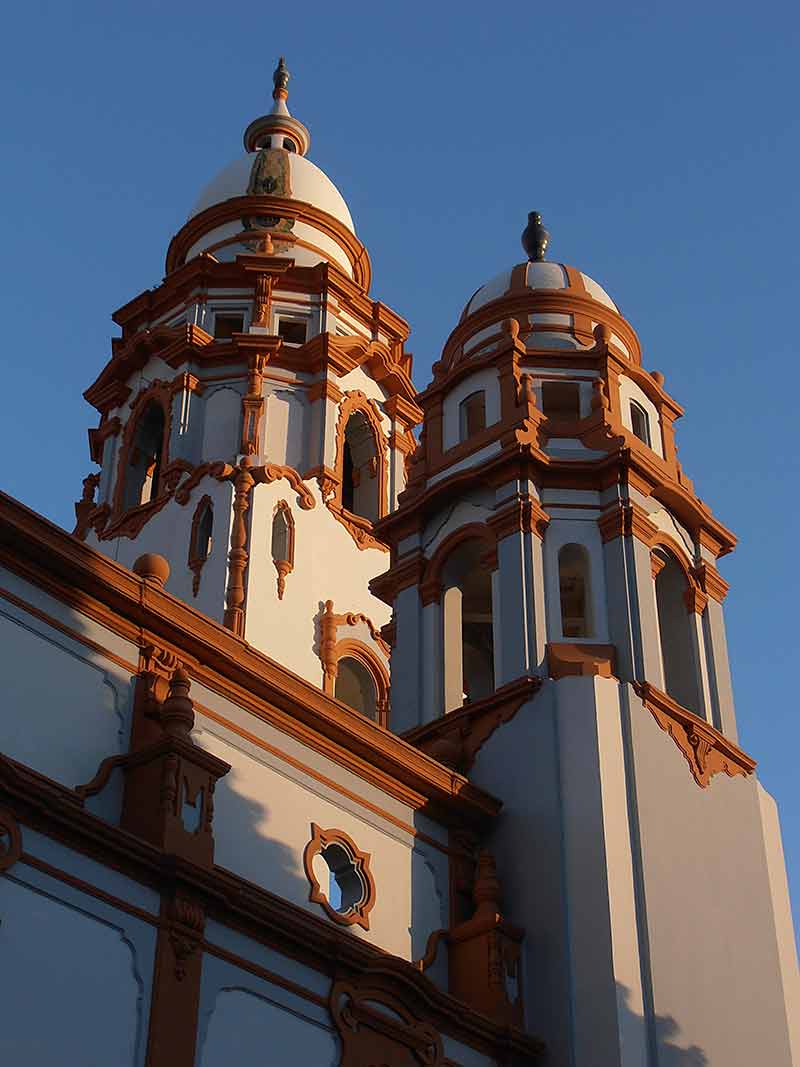
The National Pantheon of Venezuela is a must-visit historical landmark in Venezuela because it’s the final resting place for the country’s national heroes.
The pantheon is in the old town of Caracas.
Juan Domingo del Sacramento Infante built the pantheon as the Church of the Holy Trinidad in 1870 on the site of a ruined church.
It was later transformed into the memorial it is today.
The building is the first neo-gothic building in Venezuela and reflects the typical colonial designs of similar buildings constructed in the late 1800s.
The monument is light pink outside and has ornately painted ceilings and chandeliers inside.
National Pantheon of Venezuela is at Caracas 1010, Distrito Capital.
12- Coro
Travelling in Venezuela would not be complete without visiting the beautiful town of Coro, a historical town that was the first city created by the Spanish.
The Spanish founded Coro in 1527 and built the cathedral in 1583.
The cathedral still stands today, with other important buildings dating from the 18th Century.
It’s not surprising that Coro is a UNESCO World Heritage Site.
The streets are narrow and cobbled and feature beautiful plazas, immaculately maintained and restored houses, and charming small churches.
Coro is at Coro 4101, Falcon.
13- Palacio Federal Legislativo
Palacio Federal Legislativo, or the Capitolio, is a historical building in Caracas, Venezuela’s capital city, that houses the National Assembly and the National Constituent Assembly.
President Antonio Guzman Blanco ordered the construction of the building in 1872, with architect Luciano Urdaneta Vargas taking on the design.
The building was completed in 1877.
Palacio Federal Legislativo is a grand building featuring pale yellow walls set against white columns and bronze detailing and is topped with a golden dome.
Beneath the golden dome is the Oval Room, which has a ceiling that features an elaborate painting of the Battle of Carabobo fought during the Venezuelan War of Independence.
Palacio Federal Legislativo is at Esqs. Monjas a San Francisco, Hemicilco, Palacio Federal Legislativo, Carmelitas, Av Sur 2, Caracas, Distrito Capital.
14- Margarita Island
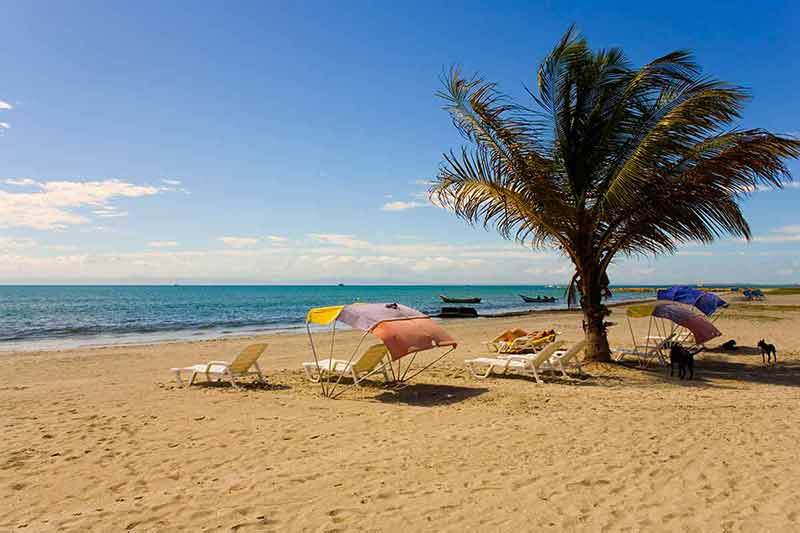
A must-visit landmark on your Venezuelan trip is Margarita Island.
The island is one of three that make up the Nueva Esparta state and is surrounded by the Caribbean Sea.
The destination is popular for its beaches that feature pristine soft white sands and plenty of shade from palm trees in typical Caribbean style.
Water sports are popular away from the beaches, with windsurfing and kite surfing attracting both locals and tourists to its shores.
On the island itself, you can visit one of its many small yet beautiful churches and castles before stopping for a bite to eat at a local restaurant.
The island is a traditional fishing island, so lots of fresh seafood is available.
There are many hotels on Margarita Island, so there are plenty of options if you want to stay over.
Margarita Island is at Nueva Esparta.
15- Temple of Vinger de Coromoto
The Temple of Vinger de Coromoto is a famous Venezuelan landmark in the city of Guanare.
The church is an attraction that draws thousands of visitors each year and is dedicated to the Virgin Mary de Coromoto, the patron saint of Venezuela.
According to local legend, an ancient Indian chief tried to hide from being baptised in the surrounding jungles when the Virgin Mary appeared to him.
While his men accepted the baptism, the chief fired arrows at the apparition.
The bow fell from his hands, and the image of the Virgin appeared in his hand.
He was then bitten by a snake and returned to Guanare for baptism and repentance.
Temple of Vinger de Coromoto is at Quebrada de la Virgen 3350, Portuguesa.
For more amazing European Landmarks, read:
- 30 Spain Landmarks
- 20 Switzerland Landmarks
- 22 Germany Landmarks
- 35 London Landmarks
- 30 France Landmarks
- 20 Italy Landmarks
- 20 Greece Landmarks
- 20 Russia Landmarks
- 20 Scotland Landmarks
- 20 Ireland Landmarks
- 21 Wales Landmarks
- 20 Turkey Landmarks
- 20 England Landmarks
- 20 Hungary Landmarks
- 21 Romania Landmarks
- 20 Ukraine Landmarks
- 20 Athens Landmarks
- 20 Rome Landmarks
- 20 England Landmarks
- 20 Portugal Landmarks
- 20 Poland Landmarks
- 20 Iceland Landmarks
- 20 Bulgaria Landmarks
- 21 Croatia Landmarks
- 20 Bulgaria Landmarks
- 20 Austria Landmarks
- 21 Finland Landmarks
- 20 Sweden Landmarks
- 20 Denmark Landmarks
- 20 Belgium Landmarks
- 20 Netherlands Landmarks
- 20 Barcelona Landmarks
- 21 Czech Republic Landmarks
- 20 Landmarks in Paris
- 20 Landmarks in Liverpool
- 10 Istanbul Landmarks
16- Catedral Metropolitana De Merida
Construction on Catedral Metropolitana de Merida began at the start of the 19th Century and was delayed several times due to earthquakes, the War of Independence and political conflicts.
The cathedral was finally completed in 1958 in a design inspired by the Toledo cathedral in Spain.
The architecture itself is impressive, and the internal decor with decorated frescos, carvings and sculptures are equally so.
Look out for the image of the Virgin of the Apple carved out of solid stone.
Catedral Metropoligana De Merida is at Avenida 4 Plazar Bolivar, Merida 5101.
17- Simón Bolívar House Museum
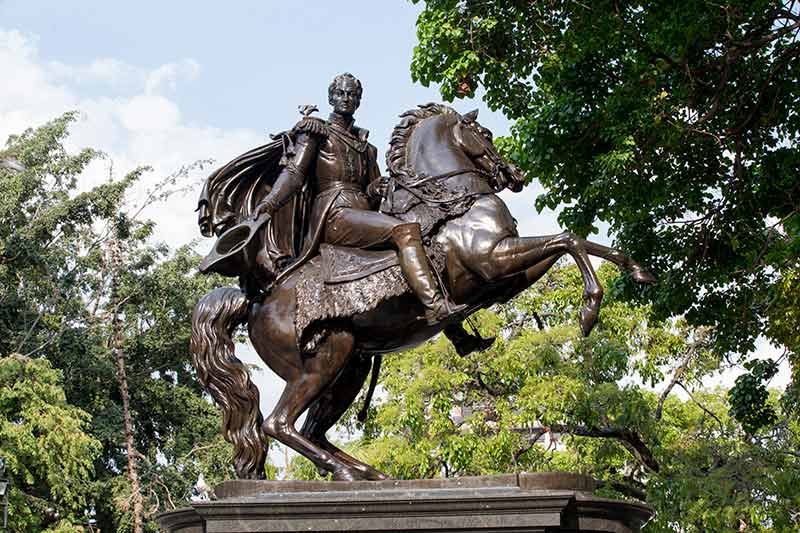
Simon Bolivar, known as El Libertador, lived in this modest house for 10 years, although the house’s history dates back to 1670, when it was built by the hermitage of Monserrate.
Bolivar lived in the house shortly before the final push for Venezuela’s independence and the Liberty Campaign of the South, both in 1821.
Following Venezuela’s independence and Bolivar regaining the title of President, he lived sporadically at the house.
To preserve this national landmark of Venezuela for future generations, the federal government requested that the Sociedad de Mejoras y Ornato de Bogota restore the house and transform it into a museum of Bolivar’s life.
Simon Bolivar House Museum is at Esquinas de San Jacinto a Traposos, Caracas, Distrito Capital. Avenida Universidad.
18- Merida Cable Car
The Merida cable car is the world’s highest cable car and the second-longest cable car ride in the world.
Starting in the city of Merida at 1577m (5174ft) above sea level, it runs up to Pico Espejo at 4765m (15,633ft).
The 12.5 km (7.77 miles) long ride began as a method of transportation to allow more people to ascend the Sierra Nevada de Merida with greater ease.
The project began life in 1952 and was completed in 1960.
In 2016, following an eight-year closure, the authorities reopened the cable car following extensive repairs and refurbishments.
Merida Cable Car is at Merida 5101, Merida.
19- Basilica Nuestra Senora Del Valle
Basilica Nuestra Senora del Valle began life as a small-town church but it’s unknown who built the church as many have stood at its location.
Father Philip Martinez dedicated the church in 1733, which is the earliest date on record.
Pope John Paul II declared the church a Minor Basilica in 1995.
The basilica’s design is gothic and is painted a pale peach colour with white detailing.
Flanking the entrance are two high towers, which sadly are not accessible to the public.
Inside the church are many highly decorative stained-glass windows, but the interior itself is relatively simple compared to other churches and cathedrals in Venezuela.
Basilica Nuestra Senora Del Valle is at El Valle del Espiritu Santo 6308, Nueva Esparta.
20- Los Aleros
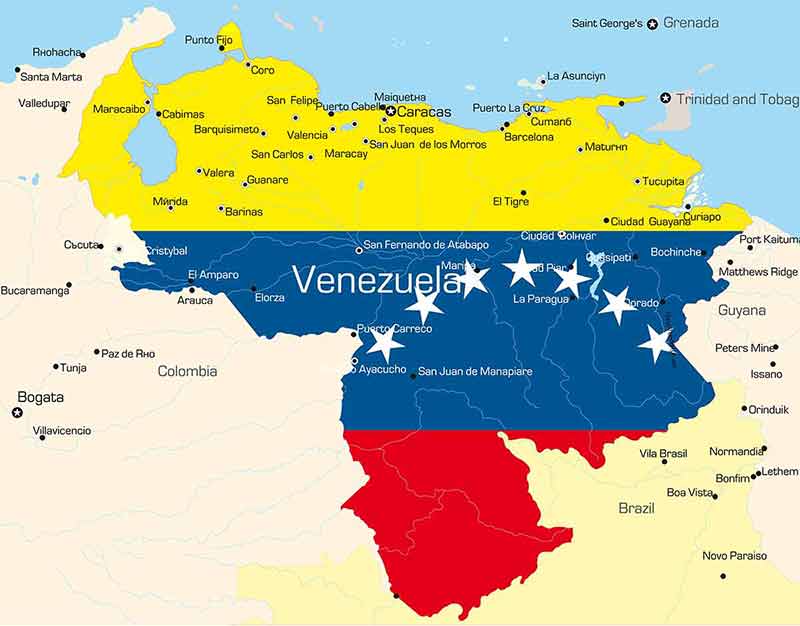
Los Aleros is a unique manmade landmark in Venezuela and is well worth a visit.
Located close to Merida and surrounded by lush forests and mountains, this small town has been designed to depict a traditional Andean town from the 1930s.
Alexis Montilla created this unique attraction in 1984.
The theme park features homes that visitors can explore, actors in period costumes, and many activities for families to get involved with.
Within the town are stucco-covered houses, cobbled streets, a post office, barbers and even a cemetery.
As the town is a living museum, everything is available to explore.
Stop by the barbers for a 1930s style haircut, and dine on traditional dishes at Restaurante La Zaranda before heading to the dance hall.
Los Aleros is at Merida 5101.
Plan Your Trip

Rent A Car – Find the best car rental rates at Discover Cars. They compare car hire companies to provide you with the best deal right now.

Find A Hotel – If you’re curious about this article and are looking for somewhere to stay, take a look at these amazing hotels.

